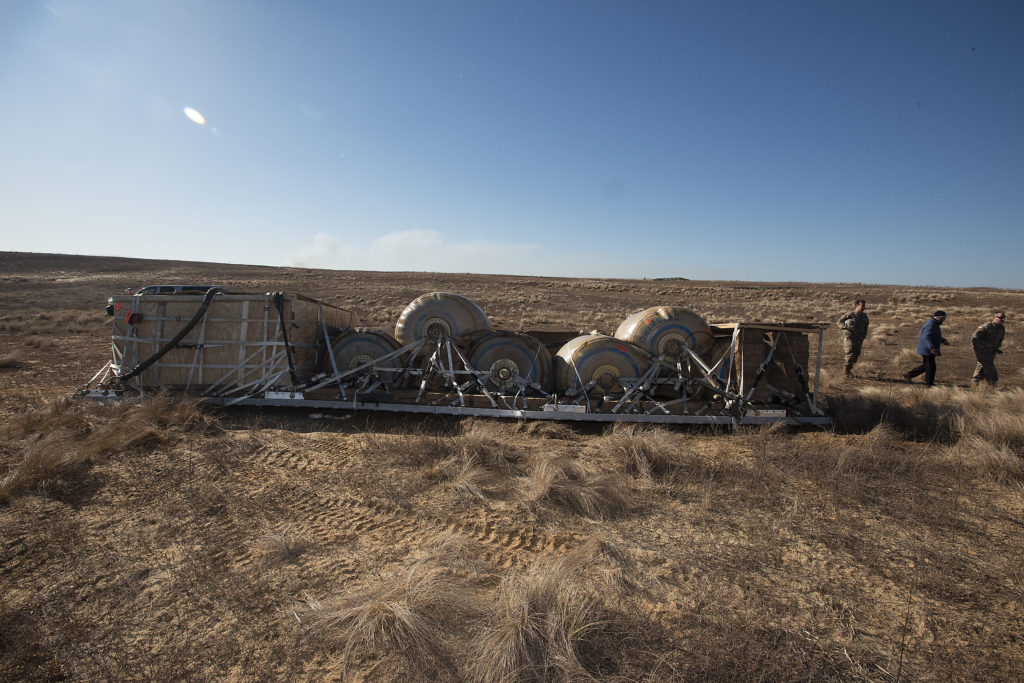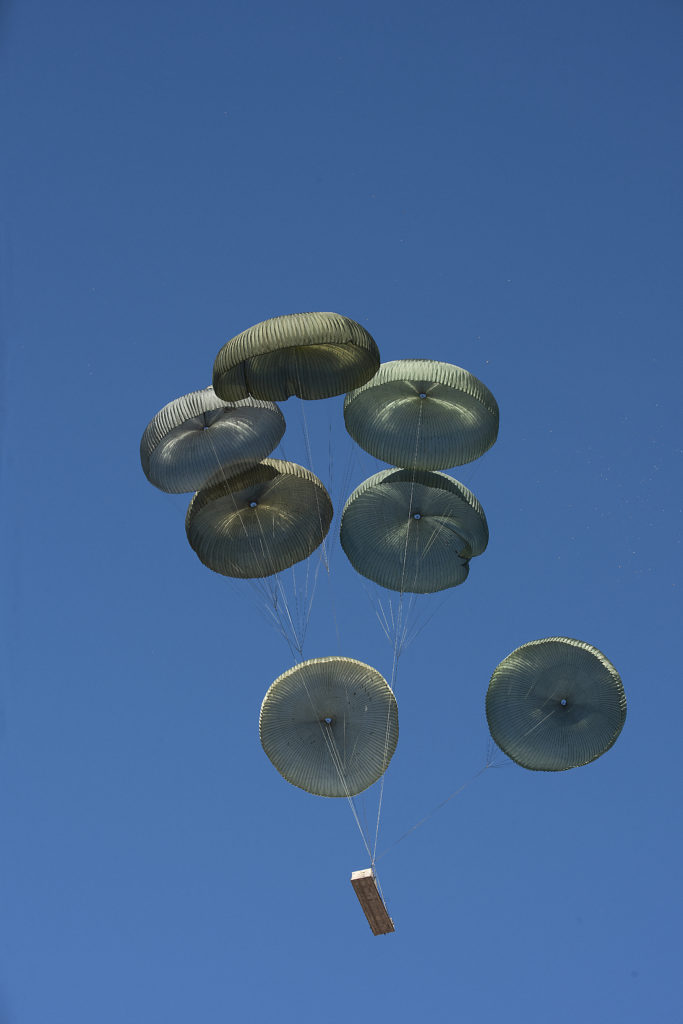By Mr. James Cochran and Mr. William Slaven, Airborne and Special Operations Test Directorate, U.S. Army Operational Test Command
FORT BRAGG, North Carolina — Aviation support Soldiers here recently tested an attack helicopter refueling and rearming system by air-dropping it out of U.S. Air Force cargo aircraft.
The Forward Area Rearm and Refueling Point (FARRP) allows Bragg’s Immediate Response Force the capability to extend range for the Multi-Function Aviation Task Force whenever it is called on to deploy.
Troops from Alpha Company, 122nd Aviation Support Battalion (ASB), 82nd Combat Aviation Brigade, worked with airborne testers from the Airborne and Special Operations Test Directorate (ABNSOTD) using low-velocity airdrop techniques within current cargo aerial delivery doctrine.
“The FARRP is a proven method of refueling and resupplying that permits combat aircraft to rapidly refuel and rearm simultaneously,” said Mr. William R. Slaven, a Military Test Plans Analyst with ABNSOTD. “It serves as a means for arming and refueling attack helicopters which ultimately serves our future Soldiers during combat missions.”

According to Slaven, testing ensures rigged loads using the low velocity airdrop system are delivered to ground troops while remaining combat effective.
One 122nd ASB Soldier said he had a magnificent time involved in the test.
“Being a part of the next level in fuel operations, there are only limits if we set them,” said Sgt. Joe Smalls. “This FARRP proves it.”
“Soldiers are expected to be proficient at all parts of the aerial delivery rigging experience to include rigging of equipment and supplies for airdrop,” said Sgt. 1st Class Timothy Nephew, ABNSOTD Project Noncommissioned Officer.

ABNSOTD’s chief of airborne testing said his outfit exists to serve both Soldiers and the airborne community.
“We strive in ‘Truth in Testing’ while never compromising safety or performance,” said Lt. Col. Cam Jordan.
“Testing promotes and delivers a safe, and more durable piece of equipment to the Warfighter,” Jordan continued.
“Soldiers relish in participating in day-to day testing. It ignites their enthusiasm to rig and load a piece of equipment which will ultimately serve our future Soldiers during combat missions.”
Operational readiness is a key factor in testing airborne equipment, according to Col. Brad Mock, ABNSOTD’s director.
“We ‘Test for the Best,’ conducting, rigorous, realistic, honest, service unique and joint testing, making sure the systems developed are effective in a Soldier’s hands and suitable for the environments in which our Soldiers in today’s Army train and fight,” he said.
~~
About the U.S. Army Operational Test Command:
The Fort Bragg, North Carolina-based ABNSOTD plans, executes, and reports on operational tests and field experiments of Airborne and Special Operations Forces equipment, procedures, aerial delivery and air transportation systems in order to provide key operational data for the continued development and fielding of doctrine, systems or equipment to the Warfighter.
The U.S. Army Operational Test Command is based at West Fort Hood, Texas, and its mission is about ensuring that systems developed are effective in a Soldier’s hands and suitable for the environments in which Soldiers train and fight. Test units and their Soldiers provide feedback, by offering input to improve upon existing and future systems with which Soldiers will ultimately use to train and fight.
